As a follow up to this question, I fitted the Multiple Logistic Regression with Interaction between Quantitative and Qualitative Explanatory Variables. MWE is given below:
Type <- rep(x=LETTERS[1:3], each=5)
Conc <- rep(x=seq(from=0, to=40, by=10), times=3)
Total <- 50
Kill <- c(10, 30, 40, 45, 38, 5, 25, 35, 40, 32, 0, 32, 38, 47, 40)
df <- data.frame(Type, Conc, Total, Kill)
fm1 <-
glm(
formula = Kill/Total~Type*Conc
, family = binomial(link="logit")
, data = df
, weights = Total
)
summary(fm1)
Call:
glm(formula = Kill/Total ~ Type * Conc, family = binomial(link = "logit"),
data = df, weights = Total)
Deviance Residuals:
Min 1Q Median 3Q Max
-4.871 -2.864 1.204 1.706 2.934
Coefficients:
Estimate Std. Error z value Pr(>|z|)
(Intercept) -0.65518 0.23557 -2.781 0.00541 **
TypeB -0.34686 0.33677 -1.030 0.30302
TypeC -0.66230 0.35419 -1.870 0.06149 .
Conc 0.07163 0.01152 6.218 5.04e-10 ***
TypeB:Conc -0.01013 0.01554 -0.652 0.51457
TypeC:Conc 0.03337 0.01788 1.866 0.06201 .
---
Signif. codes: 0 ‘***’ 0.001 ‘**’ 0.01 ‘*’ 0.05 ‘.’ 0.1 ‘ ’ 1
(Dispersion parameter for binomial family taken to be 1)
Null deviance: 277.092 on 14 degrees of freedom
Residual deviance: 96.201 on 9 degrees of freedom
AIC: 163.24
Number of Fisher Scoring iterations: 5
anova(object=fm1, test="LRT")
Analysis of Deviance Table
Model: binomial, link: logit
Response: Kill/Total
Terms added sequentially (first to last)
Df Deviance Resid. Df Resid. Dev Pr(>Chi)
NULL 14 277.092
Type 2 6.196 12 270.895 0.04513 *
Conc 1 167.684 11 103.211 < 2e-16 ***
Type:Conc 2 7.010 9 96.201 0.03005 *
---
Signif. codes: 0 ‘***’ 0.001 ‘**’ 0.01 ‘*’ 0.05 ‘.’ 0.1 ‘ ’ 1
df$Pred <- predict(object=fm1, data=df, type="response")
df1 <- with(data=df,
expand.grid(Type=levels(Type)
, Conc=seq(from=min(Conc), to=max(Conc), length=51)
)
)
df1$Pred <- predict(object=fm1, newdata=df1, type="response")
library(ggplot2)
ggplot(data=df, mapping=aes(x=Conc, y=Kill/Total, color=Type)) + geom_point() +
geom_line(data=df1, mapping=aes(x=Conc, y=Pred), linetype=2) +
geom_hline(yintercept=0.5,col="gray")
I want to calculate LD50, LD90 and LD95 with their confidence intervals. As the interaction is significant so I want to calculate LD50, LD90 and LD95 with their confidence intervals for each Type (A, B, and C) separately.
LD stands for lethal dose. It is the amount of substance required to kill X% (LD50 = 50%) of the test population.
Edited
Type is a qualitative variable representing different types of drugs and Conc is a quantitative variable representing different Concentrations of drugs.

